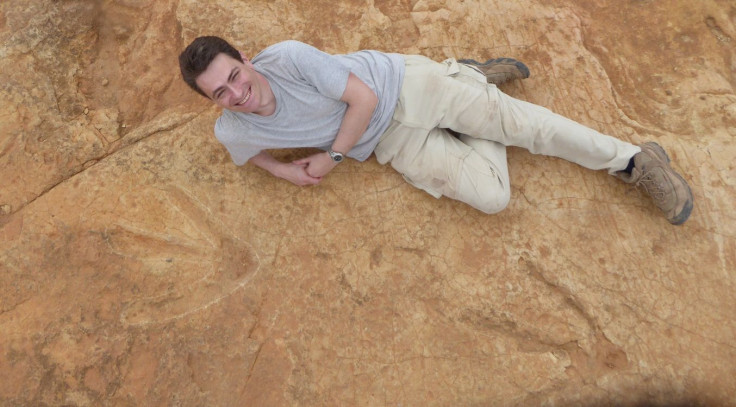Dinosaur News: New Mega-Carnivore Species Discovered In Southern Africa

Footprints of a very large meat-eating dinosaur have been discovered for the first time in southern Africa, revealing that the region was home to a mega-carnivore, the kind that has never before been found in the area. In fact, the megatheropod which has been named Kayentapus ambrokholohali is entirely new to science.
Megatheropods were massive two-legged carnivorous dinosaurs — like the famous Tyrannosaurus rex — and they mostly evolved into their large sizes in the late Jurassic and during the Cretaceous, starting about 145 million years ago. But K. ambrokholohali grew to its estimated body length of nine meters (30 feet) in the early Jurassic, about 200 million years ago.
The size estimation was based on the size of the three-toed footprints, several of which were found by a team that included researchers from the University of Cape Town, South Africa, the University of Manchester, United Kingdom and Universidade de São Paulo, Brazil. These prints were 57 centimeters long (almost 2 feet) and 50 centimeters wide. The theropod likely stood about three meters tall at the hip.
The theropod tracks, the largest known in Africa, were found in Lesotho — a small landlocked kingdom surrounded by South Africa. The 200-million-years-old surface — called a paleosurface — where they were found was likely a watering hole or river bank back in the day, as evidenced by ancient “current-ripple marks” and “desiccation cracks,” according to a statement issued by the researchers Wednesday.
“The latest discovery is very exciting and sheds new light on the kind of carnivore that roamed what is now southern Africa. That’s because it is the first evidence of an extremely large meat-eating animal roaming a landscape otherwise dominated by a variety of herbivorous, omnivorous and much smaller carnivorous dinosaurs. It really would have been top of the food chain,” Fabien Knoll from the University of Manchester explained in the statement.

At the time K. ambrokholohali lived, present-day Africa was a part of the ancient supercontinent Gondwana. The paleosurface in Lesotho where its tracks were found also has footprints of other, smaller theropods.
Lara Sciscio, the postdoctoral research fellow at the University of Cape Town, said in the statement: “This discovery marks the first occurrence of very large carnivorous dinosaurs in the Early Jurassic of southern Gondwana — the prehistoric continent which would later break up and become Africa and other landmasses. This makes it a significant find. Globally, these large tracks are very rare. There is only one other known site similar in age and sized tracks, which is in Poland.”
Compared to the T. rex, which was about 12 meters in body length, K. ambrokholohali was smaller but compared its other theropod dinosaurs that were its contemporaries, its nine meters was much larger than the average three to five meters they measured. Some fossil records show these other theropods from the early Jurassic reached about seven meters in length, at most.
The really large dinosaurs, called titanosaurs, were all herbivorous. The largest of them all, Patagotitan mayorum, was over 37 meters (122 feet) long. Titanosaurs remains are most abundant in Argentina and other parts of South America, but rare in Africa. However, one species was recently found in Tanzania.
The researchers have published their findings Wednesday in the open-access journal PLOS ONE.
© Copyright IBTimes 2024. All rights reserved.





















